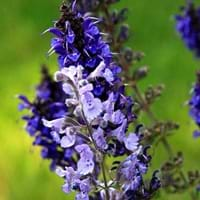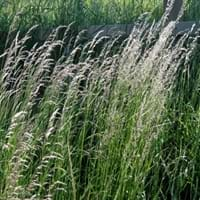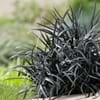Life Span
Perennial
Perennial
Origin
Hybrid origin
Europe, Asia
Types
not available
Blue Oat grass
Habitat
Alpine Meadows, shaded woods, Shady Edge
Cropland, gardens, Grassland, Roadsides
USDA Hardiness Zone
4-8
4-9
AHS Heat Zone
8-1
Not Available
Sunset Zone
1a, 1b, 2a, 2b, 3a, 3b, 4, 5, 6, 7, 8, 9, 10, 11, 12, 13, 14, 15, 16, 17, 18, 19, 20, 21, 22, 23, 24
1a, 1b, 2a, 2b, 3a, 3b, 4, 5, 6, 7, 15, 16, 17, 23, 24
Habit
Cushion/Mound-forming
Clump-Forming
Flower Color
Lavender, Blue Violet
Brown
Flower Color Modifier
Bicolor
Bicolor
Fruit Color
Not Available
Brown
Leaf Color in Spring
Light Green, Gray Green
Gray Green
Leaf Color in Summer
Light Green, Gray Green
Light Green
Leaf Color in Fall
Light Green, Gray Green
Dark Green
Leaf Color in Winter
Light Green
Tan, Brown
Leaf Shape
Pinnate
Grass like
Plant Season
Spring, Summer, Fall
Not Available
Sunlight
Full Sun, Partial Sun, Partial shade
Full Sun, Partial Sun
Type of Soil
Loam, Sand
Loam
The pH of Soil
Neutral
Acidic, Neutral
Soil Drainage
Well drained
Average
Bloom Time
Late Spring, Early Summer, Summer, Late Summer, Early Fall
Early Summer
Tolerances
Drought
Drought
Where to Plant?
Container, Ground
Ground
How to Plant?
Cuttings, reseeds, Runners
Seedlings
Plant Maintenance
Medium
Medium
Watering Requirements
Average Water Needs, Keep the Soil well drained
Does not require lot of watering, Water occasionally
In Summer
Lots of watering
Lots of watering
In Spring
Moderate
Moderate
In Winter
Average Water
Average Water
Soil pH
Neutral
Acidic, Neutral
Soil Type
Loam, Sand
Loam
Soil Drainage Capacity
Well drained
Average
Sun Exposure
Full Sun, Partial Sun, Partial shade
Full Sun, Partial Sun
Pruning
Remove damaged leaves, Remove dead branches, Remove dead leaves
Remove damaged leaves, Remove dead branches, Remove dead leaves
Fertilizers
All-Purpose Liquid Fertilizer
All-Purpose Liquid Fertilizer
Pests and Diseases
Red blotch
Red blotch
Plant Tolerance
Drought
Drought
Flowers
Yes
Not Available
Flower Petal Number
Single
Single
Fragrant Bark/Stem
Yes
No
Foliage Texture
Medium
Not Available
Foliage Sheen
Matte
Matte
Attracts
Bees, Butterflies, Hummingbirds
Not Available
Allergy
Anaesthesia, Irritation to urinary tract
Asthma, Itchy eyes
Aesthetic Uses
Beautification, Landscape Designing, Showy Purposes
Not Used For Aesthetic Purpose
Beauty Benefits
Not Available
Not Available
Environmental Uses
Air purification
Air purification
Medicinal Uses
Cough, Menstrual Disorders, Nerve pain
Arthritis, Headache, Stomach pain
Part of Plant Used
Leaves
Whole plant
Other Uses
Can be made into a herbal tea, Oil is used in mosquito repellents
Used as a nutritious food item
Used As Indoor Plant
Yes
No
Used As Outdoor Plant
Yes
Yes
Garden Design
Container, Groundcover, Mixed Border, Rock Garden, Wall
Bedding Plant, Feature Plant, Groundcover
Botanical Name
NEPETA mussinii
ARRHENATHERUM
Common Name
Catmint
Oatgrass
In German
Katzenminze
Ährengras
In French
Catmint
Folle avoine
In Spanish
catmint
oat Grass
In Greek
catmint
βρώμη Grass
In Portuguese
nêveda
aveia-
In Polish
catmint
Owies trawa
In Latin
nepetae mixtam
oat Grass
Phylum
Magnoliophyta
Not Available
Class
Magnoliopsida
Liliopsida
Clade
Angiosperms, Eudicots
Angiosperms, Commelinids, Monocots
Subfamily
Not Available
Danthonioideae
Number of Species
Not Available
Not Available
Importance of Walkers Low Catmint and Oatgrass
Want to have the most appropriate plant for your garden? You might want to know the importance of Walkers Low Catmint and Oatgrass. Basically, these two plants vary in many aspects. Compare Walkers Low Catmint and Oatgrass as they differ in many characteristics such as their life, care, benefits, facts, etc. Every gardener must at least have the slightest clue about the plants he wants to plant in his garden. Compare their benefits, which differ in many ways like facts and uses. The medicinal use of Walkers Low Catmint is Cough, Menstrual Disorders and Nerve pain whereas of Oatgrass is Arthritis, Headache and Stomach pain. Walkers Low Catmint has beauty benefits as follows: Not Available while Oatgrass has beauty benefits as follows: Not Available.
Compare Facts of Walkers Low Catmint vs Oatgrass
How to choose the best garden plant for your garden depending upon its facts? Here garden plant comparison will help you to solve this query. Compare the facts of Walkers Low Catmint vs Oatgrass and know which one to choose. As garden plants have benefits and other uses, allergy is also a major drawback of plants for some people. Allergic reactions of Walkers Low Catmint are Anaesthesia and Irritation to urinary tract whereas of Oatgrass have Asthma and Itchy eyes respectively. Having a fruit bearing plant in your garden can be a plus point of your garden. Walkers Low Catmint has no showy fruits and Oatgrass has showy fruits. Also Walkers Low Catmint is flowering and Oatgrass is not flowering . You can compare Walkers Low Catmint and Oatgrass facts and facts of other plants too.





